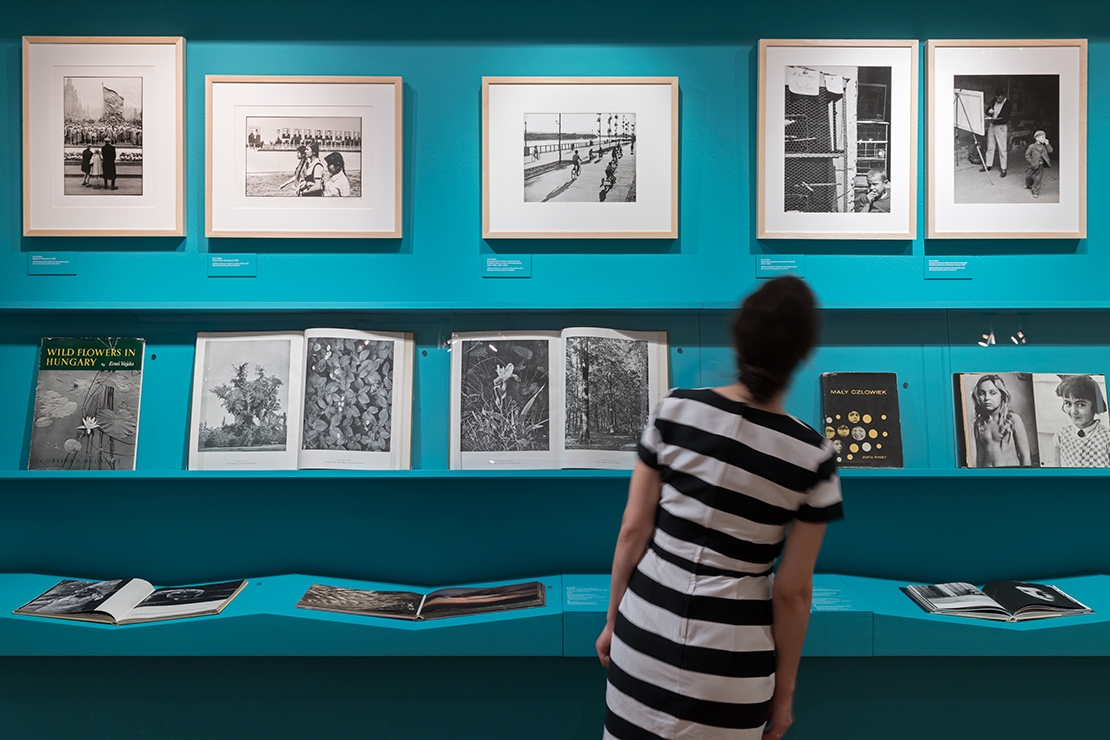
In the 20th century, photography took on the role of the medium of history, for better or worse. Life sped up and the world shrunk due to the faster transmission of information and especially as a result of the global traffic in photographic images. The development of photobooks is closely linked with the expansion of contemporary visual culture. Throughout the entire 20th century, books illustrated with photographs accompanied crucial political and social events, as well as helped spread knowledge about the world and popularise new forms of artistic expression. The evolution of photobooks was also associated with the emancipation of photography as a new medium of art and communication. What makes photobooks special is their narrative: individual shots are arranged in such a way as to make up a story. It is precisely these stories, on a par with the artistic quality of their component images, that today fascinate collectors, historians, curators and artists alike. Photobooks constitute a fascinating field of study as well as a source of inspiration and they continue to stir excitement among collectors.
In the 20th century, photobooks[1] usually took the form of illustrated tomes, catalogues and portfolios, as well as propaganda, utilitarian and artistic volumes. The different forms of photobooks resulted in heated debates concerning the definition of the genre; nevertheless there is a consensus that the photobook is a non‑serial publication in which the photograph dominates the text and is the main means of conveying the narrative.[2] The first such books were volumes with inserted photos, which appeared in the mid‑19th century after J.L.M. Daguerre lost the battle over photographic technique. Both the abandonment of the technique based on unique daguerreotype plates covered with photosensitive substances and the popularisation of photographic print on paper brought photography closer to the printing industry. The Pencil of Nature (1844–1846) by William Henry Fox Talbot, a pioneering work both in the field of photography and the photobook genre, has twenty-four prints that were pasted in by hand.[3] It was not until the late 19th century, however, that the popularisation of photographic print revolutionised the illustrated press and opened the way for a new medium: the printed photobook.[4] Its informative qualities and visual attractiveness, combined with the potential for mass copying and distribution, helped the photobook gain popularity and influence the imagination of modern man.
In the context of the abovementioned research, Central Europe remains but a narrow margin or an invisible central point overshadowed by the critical discussions on German and Soviet photobooks. Should it be mentioned at all, it is usually – like in Badger and Parr’s work – at random and tendentiously, with the cultural and historical context either omitted altogether or dramatically reduced. Much of the general photobook criticism overlooks Central European examples completely.
Over the last century, the photobook was linked with modernisation processes as well as the development of visual persuasion techniques, producing historical documents of the era. In the 21st century, however, its status has changed. The development of the internet and social media resulted in a complete transformation of visual and information culture as well as the book market. Popular photobooks gave way to limited collector’s editions: sophisticated, artistic items created by true enthusiasts for a more elite, niche market.[5] The history of the 20th century told through photobooks is both awe‑inspiring and factually intriguing. The 21st century, in turn, is the age of aesthetics
and subjective artistic expression. It seems that while studying photobooks a line should be drawn between the photobook as an autonomous work of art and the purpose‑serving, utilitarian book shaped predominantly by editors (publishers). The same distinction applies to the differences between analysing artistic expression and researching visual records of social and political history.[6]
Research on photobooks has developed significantly in the last two decades, essentially transforming our understanding of photography and influencing the definition of the artistic book as well as the status of the photographic work of art. The canonical critical work is Gerry Badger and Martin Parr’s three‑volume The Photobook: A History.[7] Curiously, the interest in photobooks originated in the collectors’ circle and was first manifested especially in the areas where many collectors reside.[8] Soon afterwards, photobooks became a subject of academic study and valuable museum exhibits.[9] Research on photobooks takes different angles. Most critical texts focus on geographic criteria (regions, countries, cities) and chronological ones (the 19th and 20th century, the interwar period, contemporary).[10] Much less frequently, researchers take on a problem‑based approach or concentrate on specific authors, topics or book forms (for instance: photobooks by women, photomontage).[11] In the context of the abovementioned research, Central Europe remains but a narrow margin or an invisible central point overshadowed by the critical discussions on German and Soviet photobooks. Should it be mentioned at all, it is usually – like in Badger and Parr’s work – at random and tendentiously, with the cultural and historical context either omitted altogether or dramatically reduced. Much of the general photobook criticism overlooks Central European examples completely[12], while in other studies our region is represented by photobooks published in German- and Russian‑speaking countries.[13] Problem‑based German criticism does more justice to Central European photobooks, representing them in a deeper and more complex way; however, here one may also observe the tendency to focus on English‑language examples.[14] A recently published critical volume dedicated to Czechoslovakian photobooks promises to open a new area of study.[15] But in what way is our ‘Photobloc’ different?
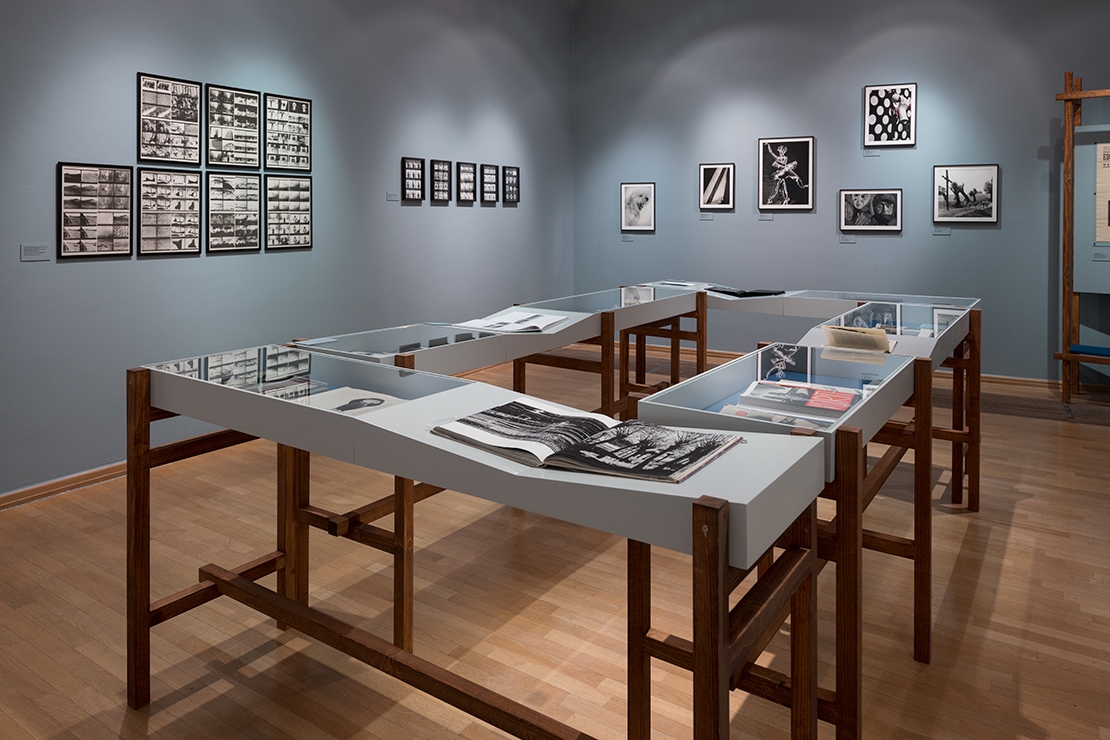
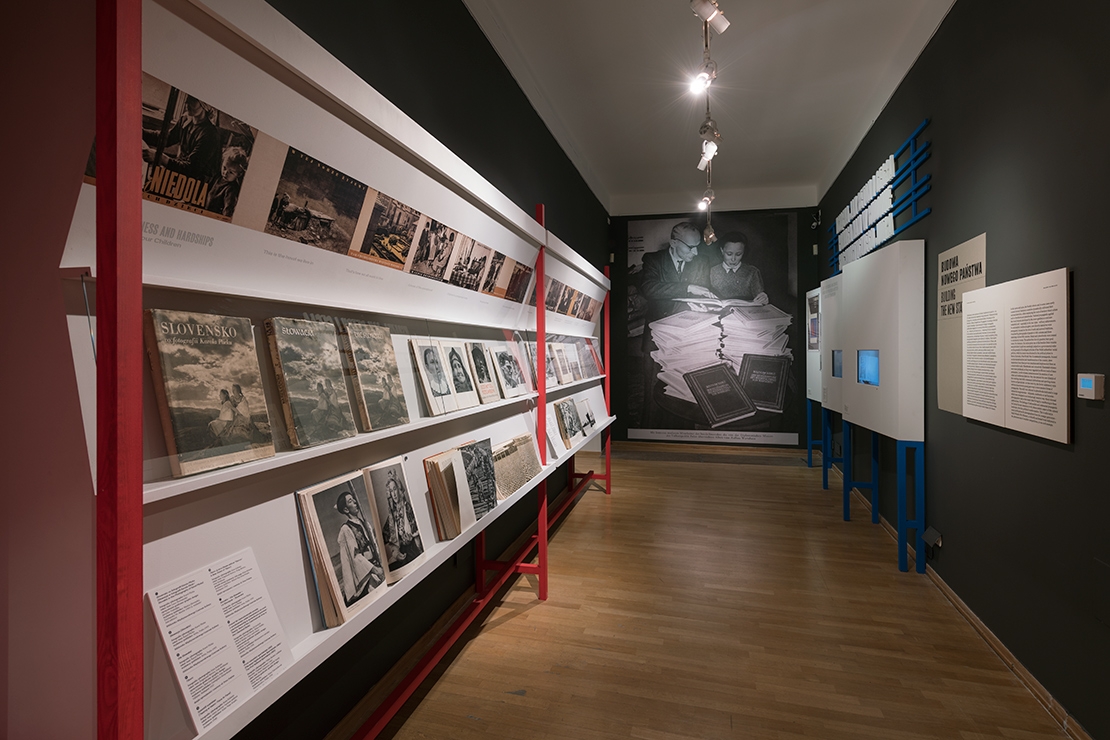
Central European photobooks constitute an intriguing archive of the region’s complicated history. Artistic hopes and ambitions, utopian prophecies, pursuits of independence, chronicles of everyday life and wide‑scale modernisation are mixed with images of suffering and mass destruction, replicated for propaganda purposes. History decoded on the basis of photobooks is compelling: brutal and beautiful at the same time, sentimental and heart‑rending. The wider, international perspective allows one to see a shared space of books and people, the same fate determining the lives of all Central Europeans. In undertaking a study on Central European photobooks, we are hoping not merely to redress the random choices made by Western scholars but also to understand better the unique character of Central European examples. A thorough study tracing back to the roots of the genre combined with comparative analysis should allow us not only to expand and transform the existing canon but also to correct certain misapprehensions in the history of photography. Similar works focused on individual books and photographers already exist – suffice it to mention the reprint of Zdenek Tmej’s Abeceda duševního prázdna [The Alphabet of Spiritual Emptiness], critically edited by Vladimir Birgus, published by Errata Editions in New York.[16] Another example is the new edition of Zofia Rydet’s Mały człowiek [The Little Man], released by the Archeologia Fotografii [Archaeology of Photography] foundation in Warsaw.[17] It is also worth mentioning the exhibition on photography with its accompanying text in the export magazine Polska [Poland].[18] Historical research on photobooks also covers the role of graphic designers, whose input was often crucial, like in the case of Wojciech Zamecznik, co‑creator of the abovementioned photobook by Rydet.[19] Both Tmej and Zamecznik are gifted artists, acknowledged also by Western academics.[20] Apart from reordering the materials, supplanting the canon with a wide array of new specimens and presenting the history of the region from a fresh perspective, our enquiries conducted while working on the exhibition allowed us to delineate several new directions in which future Central European ‘photobookology’ could develop.
Over the last century, the photobook was linked with modernisation processes as well as the development of visual persuasion techniques, producing historical documents of the era. In the 21st century, however, its status has changed.
The challenge that we are taking up in creating Photobloc is about changing the context in which Eastern European photobooks are usually presented. As far as the 20th‑century examples are concerned, in our region chronology seems a much more relevant organising principle than geography. The first books published in the late 19th and early 20th centuries are infused with national fervour, with independence struggles occurring in many regions that were dominated then by the ruling monarchies. In Hungary and Romania, independent at the time, the turn of the 20th century was also a transformational period of swift modernisation. The common experience of the entire region involves the tragic events of two world wars and the interwar period between them, torn between communism and fascism. Central Europe became unified as a result of domination by the USSR after the Yalta Conference, with the imposition of the Soviet model of communism, eventually overthrown in 1989. In 1991, after the breakdown of the USSR, Lithuania, Latvia and Estonia regained their independence. The experience of the political and economic transformation involving the introduction of the capitalist free‑market economy, the subsequent joining of NATO as well as the EU, make Central European countries more alike than different. Central Europe is neither a separate continent, like Latin America, nor an ideological monolith similar to the former USSR, nor is it a language‑based federation, as is the case with German and Anglo‑Saxon countries. Rather, the strength of this heterogeneous region, defined by its traumatic 20th‑century history, comes from its multiple cultures and characteristic diffusion. The structure we are proposing for both the exhibition and the book is derived from this unique Central European experience of history. Significantly, it also influenced the final selection of the material. In other words: rather than make our choices based on formal and artistic criteria, we focused predominantly on the photobooks’ ties with the contemporary social and political situation as well as that with the region’s History, with a capital h. It is History, after all, which dictates the rhythm of our narrative. The chapter titled ‘Photobook’ tells the story of the photobook’s genesis. ‘Art Photography’ is dedicated to the artistic and avant‑garde usage of photobooks. The chapters ‘Building the New State’ and ‘War and Trauma’ focus on the volumes used to pursue political and propaganda goals. ‘Everyday Life’, in turn, shows the illusion of post‑war freedom – it is a tale of idealised everyday existence. How adulterated this image was can be deduced from the photobooks and ‘protest‑books’ discussed in the final chapter, ‘Voices from the Streets’, dedicated to the fall of communism and the introduction of the new political and economic model. Each chapter has its own chronology and internal logic, moving beyond the conventional caesuras of political history.
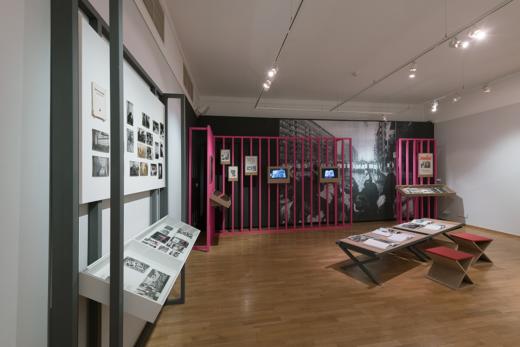
‘The Photobloc: Central Europe in Photobooks’, exhibition view, International Cultural Center in Cracow
The proposed order blends the geographic and problem‑based approach. Our goal is to present the region as an area of shared historical and political experience, as well as shared cultural and artistic tradition. Another important area of focus is the intriguing local varieties, such as the magnificent Czech school of Modernist photography or Polish underground publishing in the 1980s. Following this principle, we narrowed down our scope to the Baltic states (Lithuania, Latvia, Estonia), Poland, the Czech Republic, Slovakia, Hungary and Romania. Considering the historical complications and the vast amount of available material, it was with heavy hearts that we put aside all Yugoslavian photobooks and, as a result, all those published in the countries of the former Yugoslavia. Bulgarian photobooks also merit a separate study, as presently, alongside Albania, this country is one of the least studied areas in Europe in this context. Conversely, photobooks published in the former GDR, Russia, Belarus and Ukraine are included in the already existing extensive research on German and Soviet photobooks. Another unique, though painful, aspect of 20th‑century Central European history is the topic of war and the Holocaust. Analysing photobooks dealing with war trauma allows us not only to realise how certain images shaped (and continue to shape) our memory of these events but also how they were utilised for propaganda purposes – especially during communist rule but also after that period. The photobooks on Auschwitz‑Birkenau, or on the Shoah in general, provide plenty of material for further comparative research and definitely merit a separate extensive study.
Propaganda – that created in the new states in the interwar period and its post‑war Stalinist guise, as well as that published during the thaw that followed the dictator’s death – emerges in the selected photobooks as an indispensable aspect of the region’s social and political history. Its varied forms and strategies are discussed in the essay by Thomas Wiegand, whose insights supplement our Central European perspective with the East German context.
The cheapest available paper, the simplest offset printers or duplicating machines – or, in cases of a lack of these, the return to photographs developed and copied at home – all these features add to the independent and underground publications an unmistakable counterculture touch [..].
State propaganda inspired another characteristic aspect of our regional culture: anti‑totalitarian resistance, expressed in the Polish works published in the early Solidarity period and during martial law in Poland but also in the photobooks documenting the political revolutions in Romania and Latvia, published immediately after the event. To understand clearly both these important topics – propaganda photography and anti‑communist opposition – it is essential to analyse the publishing policies dictated by the state. The political investment of the Soviet Bloc countries in propaganda books must inform our reading of post‑war Central European photobooks. Stimulating reading through facilitating the access to books, creating new libraries and touring bookshops as well as increased print runs of tens of thousands or hundreds of thousands of copies was meant not only to combat illiteracy but also to feed carefully manipulated content to worker‑peasant masses. The post‑Yalta division of the continent resulted in the growing importance of books – and photobooks especially – as a means of transmitting images between the two sides of the Iron Curtain. Interesting conclusions can be drawn both from the analysis of the communist visual narratives focused on the countries’ success, published with the aim of exporting them abroad, and from looking into photobooks about Western countries published in the Eastern Bloc. Another topic entirely – and one that goes beyond the scope of the present project – is investigating Western photographers’ and publishers’ perspectives on the so‑called peoples’ republics. Such photographic journeys across political boundaries reveal tensions between different images of reality: visions that could be either propagandistic or documentary, expected and enforced or smuggled in. One of the creators of travel photobooks depicting cities and countries both within and outside the Eastern Bloc was the Romanian photographer Hedy Loffler – in the present volume we include an essay on her by Adriana Dumitran.
Things that could or could not be shown were determined by the censorship in all the Eastern Bloc countries but the visual codes were also influenced by the conventions imposed by propaganda. As a result, photobooks on certain topics, such as large industrial conglomerates or the erection of new socialist districts and cities, remain a rarity. On the other hand, it is equally inspiring to discover those topics, themes and images that were denied publication permits and stayed hidden in photographers’ private archives. Aside from censorship, another big influence on publishing can be traced in the shortages of paper and printing materials, which had an impact not only on the quality of the printed volumes but also on publishing policies.[21] Valuable manuscripts often waited years for their turn, sometimes in vain. Whenever a volume did not conform to the official policy of state‑owned publishers, just getting it into print demanded intricate political manoeuvres or at least having well‑placed friends. As a result, truly independent artistic projects were an absolute rarity. The few examples include photobooks by Edward Hartwig, Martin Martinček and Zofia Rydet. The vast majority of the published works were travel photobooks, usually following the same pattern, conforming to the demands of propaganda and censorship. Photographers specialising in this genre had a very narrow margin of creative freedom. And yet, despite these constraints – or perhaps because of them – many photobooks combined travel book conventions with those of photojournalism (suffice it to mention the photobooks by Hedy Loffler, Karol Kallay, Jan Styczyński, Antanas Sutkus or Romualdas Rakauskas).
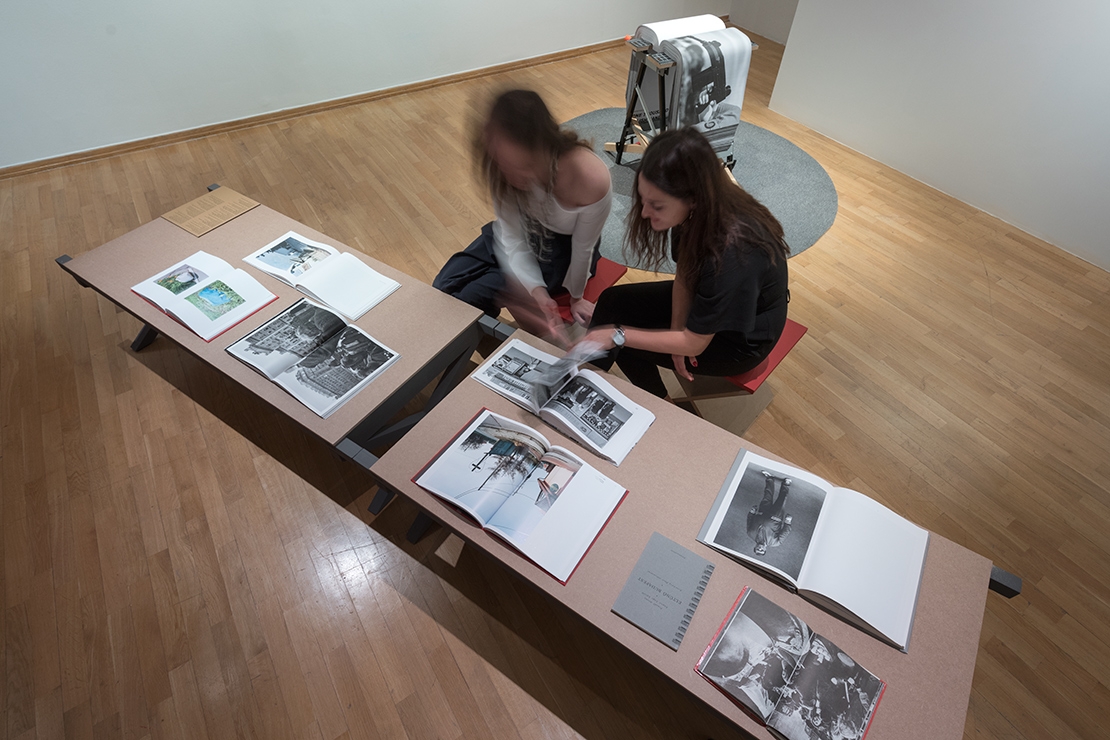
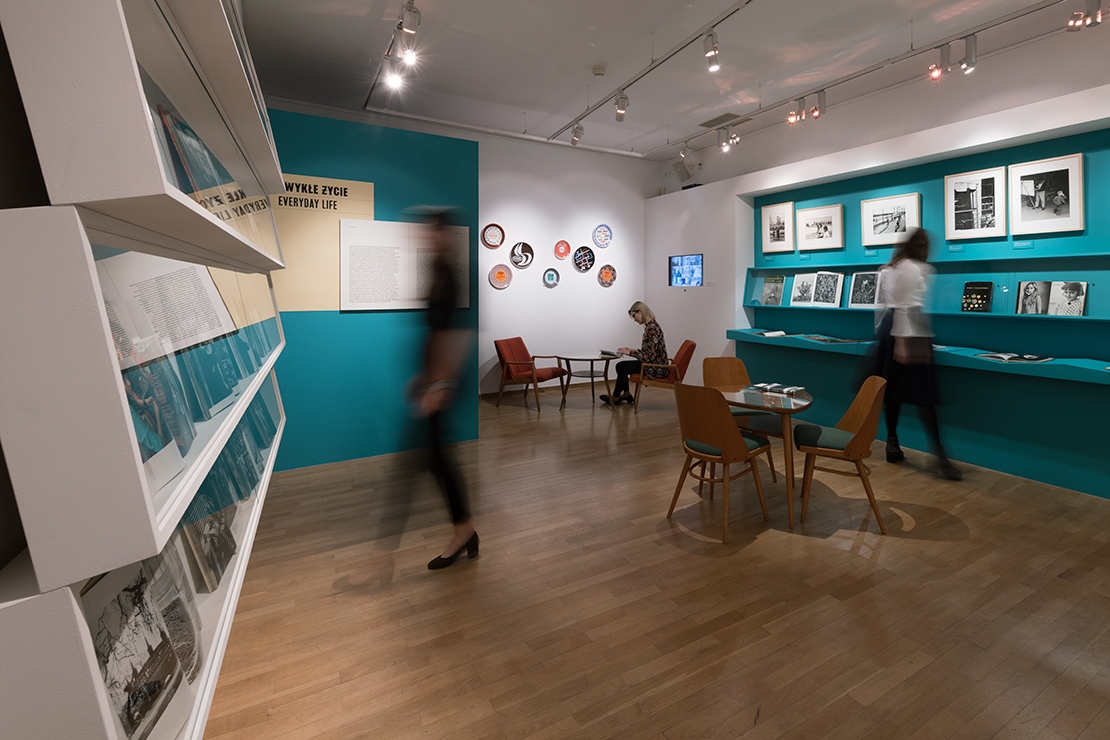
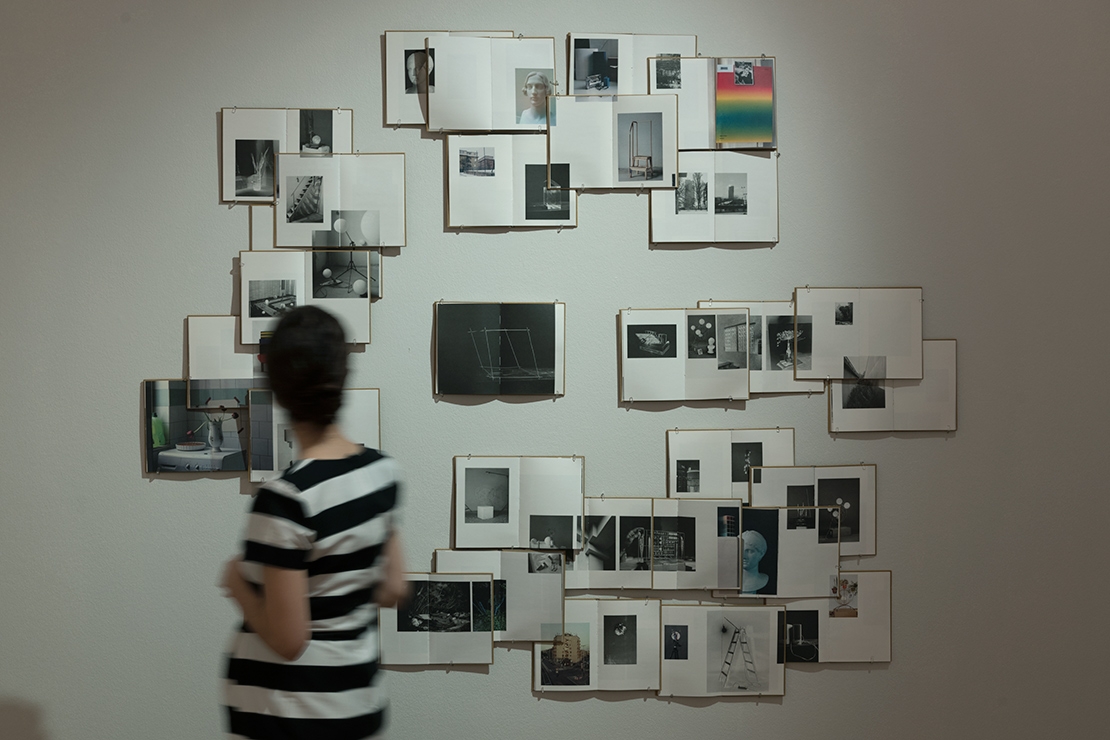
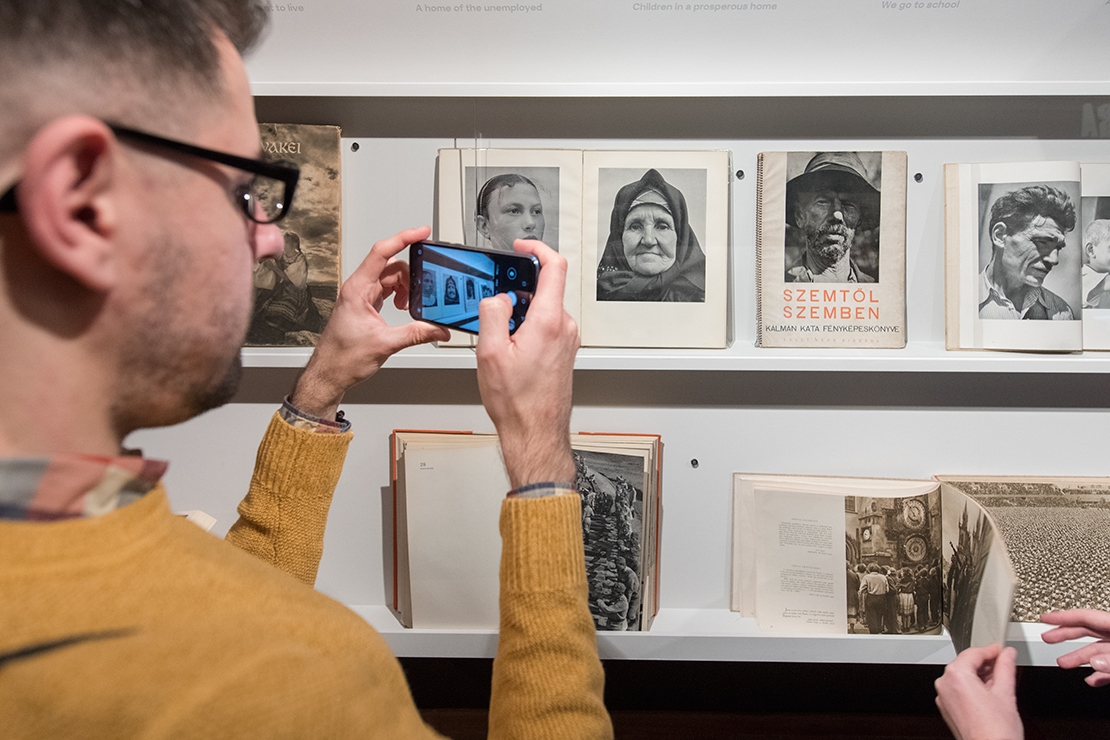
More creative freedom was allowed with reference to topics far removed from everyday life and politics – in areas such as nature and mountain photography or in the photobooks addressed to children and teenagers. Much well‑deserved appreciation was directed towards the photobooks by Vilem Heckel, Włodzimierz Puchalski, Lech Wilczek and Miroslav Peterka.
This specific character of Central European publishing, determined by its political and social context, makes it necessary to include in our enquiry not only the masterpieces created by leading avant‑garde and neo‑avant‑garde artists, but also mass‑produced, ostensibly middling titles. This, in turn, forces us to move beyond the realm of art history and history of photography, along with their established research paradigms, and to undertake interdisciplinary enquiries into visual culture in broad terms, as well as political history, publishing history and printing techniques.
One such new area of research is the analysis of Central European photobooks based on their material form. While before World War II, Central European (and especially Czech) printing boasted a high or very high quality, after the war it entered a period of gradual decline.[22] The reasons behind this state of affairs include not only the war‑inflicted damage to industry (as in Poland) but also, progressively, the severe lack of new investment and technology: the characteristic, black‑and‑white rotogravure printing remained the norm until the 1970s. For a telling contrast, it is enough to compare the book Zagłada żydostwa polskiego [Extermination of Polish Jews] published in 1945 in Łodź with Hermann Claasen’s photobook Gesang im Feuerofen [Singing in the Furnace] published in Dusseldorf two years later.[23] The difference in the quality of paper, image reproduction and printing between these two examples testifies to the dramatic discrepancies between the devastated Polish industry and the situation in Germany after her defeat in the war. Another marked contrast can be observed between the neo‑avant‑garde publications from the 1970s or those of the 1980s anti‑communist opposition and the contemporary production of state‑owned publishers. The cheapest available paper, the simplest offset printers or duplicating machines – or, in cases of a lack of these, the return to photographs developed and copied at home – all these features add to the independent and underground publications an unmistakable counterculture touch, at the same time exposing the mechanisms of power and control dominating the entire Soviet Bloc.
The unique character of Central European photobooks stems thus from the intersection of artistic ambition and propaganda, grand historical narratives and small sanctuaries of freedom. The photobooks we are presenting show the history of our region but they also document changing social relationships, political visions and challenges posed to art and photography.
To understand clearly both these important topics – propaganda photography and anti‑communist opposition – it is essential to analyse the publishing policies dictated by the state. The political investment of the Soviet Bloc countries in propaganda books must inform our reading of post‑war Central European photobooks.
The origins of the project of which the present volume and exhibition constitute a part can be traced to a conference in Poland’s National Library in 2013, where we first presented a tentative definition of the photobook together with a set of assessment criteria, sketching the main issues around the book medium.[24] In this way, while creating the Polish photobook canon we also made revisions to the photographic one, hitherto composed from individual images and the names of their respective photographers. At the same time, our goal was to introduce the photobooks to the most modern environment by bringing them online. In March 2014, we started our blog polishphotobook.tumblr.com, offering a selection of, in our view, the most interesting photobooks published in Poland from the early 20th century to the present. Apart from household names such as Zofia Rydet and Edward Hartwig, we included some less known or forgotten artists such as Aleksander Minorski, Jan Styczyński and Tercjan Multaniak. Our initiative met with a favourable reception and soon developed into a cycle of meetings and lectures. Later, it brought us a grant from the Ministry of Culture and National Heritage, inspired our texts published on the English‑language portal Culture.pl and paved the way for the first photobook exhibition during the Krakow Photomonth (Vistula: With and Against the Tide of Propaganda, Dom Norymberski in Krakow, 16 May – 14 June 2015).
In this way, we managed to incorporate our enquiries into a wider trend in photography research. After all, they were inspired by the artistic pursuits of such contemporary artists and photographers as Zbigniew Libera, Aneta Grzeszykowska, Kuba Dąbrowski, Lukaš Jasansky and Martin Polak or, more recently, Rafał Milach and Peter Puklus, who in many different ways discovered (and keep discovering) a new potential hidden in photography’s links with media such as the photobook and the press. All the above‑mentioned artists play a role in the ever‑growing global photobook movement, which in the last decade resulted in the creation of an entirely new artistic (and collector’s!) field. In our research, we tried to stress our different approach to photobooks from the very outset. While in the last two decades many photographers made a transition from ‘utility’ photography to art, we were interested in the opposite tendency: as photography was becoming progressively more artistic, we saw photobooks as a non‑gallery form of expression – which, in turn, drew us to older photographic books viewed as a ‘non‑artistic’ variety, which were nevertheless rich in extra‑artistic contexts and photographic content. We kept collecting old and largely forgotten photographic books published in Poland and other Central European countries, replacing the ones printed in the West, which had hitherto dominated on our bookshelves.
The real breakthrough, however, came after the conference on Roman Vishniac in the International Center of Photography in New York.[25] Vishniac, the author of the canonical photobook Polish Jews, dedicated his best years to documenting the lives of Polish Jewry, understanding ‘Polish’ as united by a unique culture, living between Germany and Russia (or the Third Reich and the USSR), moving freely between Poland, Lithuania, Latvia, Czechoslovakia and Romania.[26] Theirs was an identity as equally multifaceted as that of Vishniac himself, who arrived in Berlin fleeing the Soviets and then escaped to New York from the Nazis. The same complexity characterises many photographers, not only of Jewish descent, living and working in Central Europe – Jan Bułhak, viewed as the father of Polish, Lithuanian and Belarusian artistic photography, is a case in point.[27] In other words, it was only from this culturally and geographically distant perspective that it became clear that an organising principle transgressing political and linguistic boundaries would offer much more valuable insights and allow us to avoid nationalist bias. As a result, we abandoned the idea to write a volume on Polish photobooks in favour of focusing on the wider area of Central Europe.
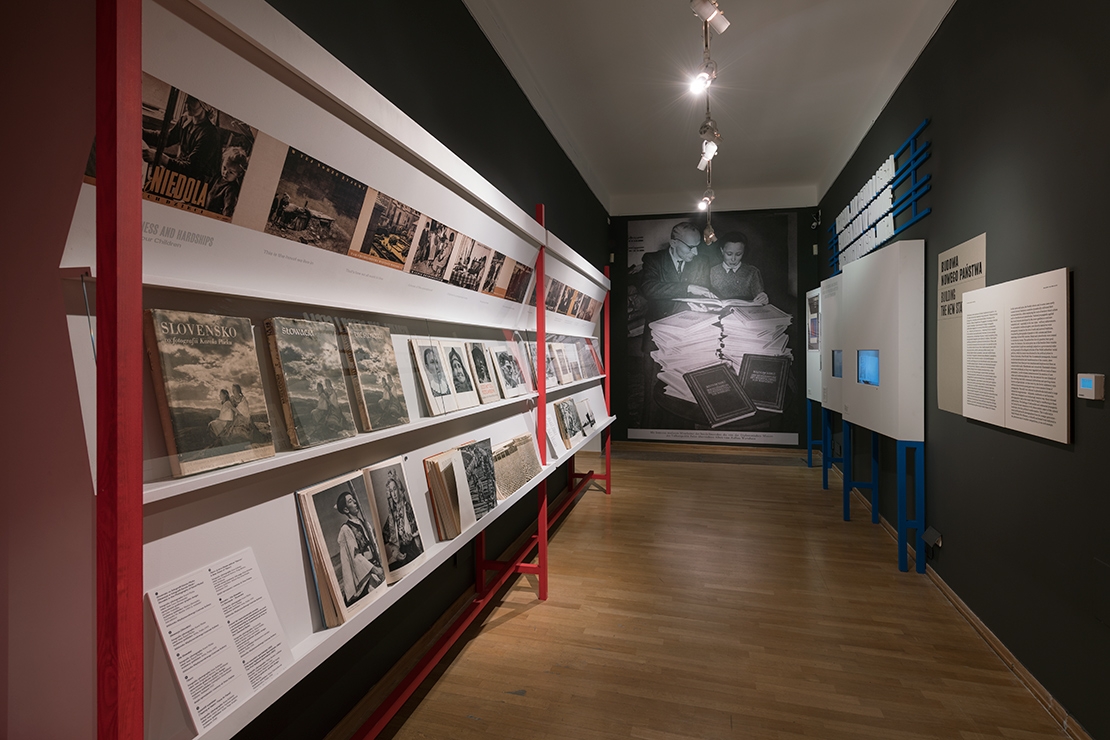

Owing to its history and programme, the International Cultural Centre in Krakow offered the ideal space for such an undertaking. Founded by Jacek Purchla and currently led by Agata Wąsowska‑Pawlik, the ICC focuses on Central Europe, displaying in its galleries Central European art in its broad cultural, social and political context. At this point we would like to express our gratitude not only to the ICC’s managers – also including its deputy director Łukasz Galusek – for their trust in our project but also to the co‑curator of Photobloc, Ms. Natalia Żak. Had it not been for her knowledge, experience and enthusiasm, this exhibition would not have been possible. We are also deeply grateful to the coordinator of the exhibition Ms. Karolina Wojcik and the wonderful editors of the present volume, Paulina Roszak-Niemirska and Magdalena Link-Lenczowska; as well as to Mr Damian Nowak and Mr Kuba Sowiński, who are responsible for the final look of, respectively, the exhibition and the book.
Undertaking the work on organising a conference and an exhibition as well as preparing a book, we knew our goal was to create a network of academics based in all the countries involved in the project. Therefore, we welcomed the participation of the following researchers specialising in photography: Vladimir Birgus and Tomaš Pospěch (the Czech Republic), Bohunka Koklesova (Slovakia), Agnė Narušytė (Lithuania), Arnis Balčus (Latvia), Eve Kiiler (Estonia), Adriana Dumitran (Romania), Claudia Kussel and Peter Puklus (Hungary). We also received support from the well‑known artist and photobook enthusiast Wojciech Wilczyk. We knew that there were differences between these countries in terms of the state of research, yet we felt that this integration of research and international cooperation might help to bridge those gaps and supply valuable research questions. We were especially interested in juxtaposing different perspectives and creating a new quality by combining collector‑related, academic and artistic discourses.[28] For our part, we took it upon ourselves to select photobooks from Poland and identify sufficiently interesting topics for our team. Our photobook selection and the main themes to be addressed by the exhibition were ultimately tested in March 2018 at the conference held at the ICC, attended by all the scholars involved in the project. As a result, Photobloc is a collective effort – the sum of intriguing debates and shared observations on this fascinating region and its photobooks, an attempt to bring back together the scattered territory which in fact has more common features than contrasts.
[1] For an expanded definition of the photobook see A. Mazur and Ł. Gorczyca, ‘Polska książka fotograficzna. Wstęp do alternatywnej historii medium’, in A. Mazur (ed.), Głębia ostrości, PGS, 2014, pp. 74–102.
[2] G. Badger and M. Parr, ‘Introduction. The Photobook: Between the Novel and Film’, in G. Badger and M. Parr (eds), The Photobook: A History, vol. 1, Phaidon Press, 2004, pp. 7–11; M. Neumuller, ‘By the Book’, Photobook Phenomenon. Centro de Cultura Contemporania de Barcelona – Foto Colectania – RM, n.d.; J.L. Neves, ‘What is a Photobook?’, Source Photographic Review, vol. 88, 2016, pp. 5–9; J. Colberg, Understanding Photobooks: The Form and Content of the Photographic Book, Focal Press, 2016.
[3] For more on Talbot’s book see P. di Bello, C. Wilson and S. Nazir (eds), The Photobook: From Talbot to Ruscha and Beyond, I.B. Tauris, 2012.
[4] For more on the development of photographic printing techniques see D. Peters, ‘Fotografie, Buch und grafisches Gewerbe‘in M. Heiting and R. Jaeger (eds), Autopsie: Deutschsprachige Fotobücher 1918 bis 1945, Band 1, Steidl, 2012, pp. 12–23.
[5] L.A. Martin, ‘Invitation to a Taxonomy of the Contemporary Photobook’, in Photobook Phenomenon, Centro de Cultura Contemporania de Barcelona – Foto Colectania – RM, n.d.
[6] K. Pijarski, ‘On Photography’s Liquidity, or, (New) Spaces for (New) Publics?’, in A. Rastenberger and I. Sikking (eds), Why Exhibit? Positions on Exhibiting Photographies, Fw:Books – The Academy of Fine Arts – University of Arts, 2018, pp. 17–30.
[7] G. Badger and M. Parr, The Photobook: A History, vol. 1–3, Phaidon Press, 2004, 2006 and 2014.
[8] M. Heiting and T. Wiegand (eds), Deutschland im Fotobuch, Steidl, 2011; M. Heiting and R. Jaeger (eds), Autopsie: Deutschsprachige Fotobücher 1918 bis 1945, vol. 1, Steidl, 2012; P. Pfrunder (ed.), Schweizer Fotobücher 1927 bis heute: Eine andere Geschichte der Fotografie, Lars Muller Publishers, 2012.
[9] B. Dogramaci et al. (eds), Geduckt und erblättert. Das Fotobuch als Medium ästhetischer Artikulation seit den 1940er Jahren, Verlag der Buchhandlung Walther Konig, 2016; M. Neumuller, ‘By the Book’, Photobook Phenomenon, Centro de Cultura Contemporania de Barcelona – Foto Colectania – RM, n.d.
[10] H. Fernandez, Photobooks in Spain 1905–1977, RM – Museo Nacional Centro de Arte Reina Sofia, 2014; H. Fernandez (ed.), New York in Photobooks, RM, 2017; F. Gierstberg and R. Suermondt (ed.), The Dutch Photobook; A Thematic Selection from 1945 Onwards, Aperture, 2012; W. Lundgren and M. Parr (eds), The Chinese Photobook: From the 1900s to the Present, Aperture, 2015; R. Kanero and I. Vartanian, Japanese Photobooks of the 1960s and ’70s, Aperture, 2012.
[11] M. Lang, R. Lederman and O. Yatskevich (eds), How We See: Photobooks by Women, 10 × 10 Photobooks, 2018; J. Toman, The Modern Czech Book: Photo/Montage in Print, Kant, 2009.
[12] L.A. Martin, ‘Invitation to a Taxonomy of the Contemporary Photobook’, Photobook Phenomenon, Centro de Cultura Contemporania de Barcelona – Foto Colectania – RM, n.d.
[13] M. Lang, R. Lederman and O. Yatskevich (eds), How We See: Photobooks by Women, 10 × 10 Photobooks, 2018.
[14] B. Dogramaci et al. (eds), Geduckt und erblättert. Das Fotobuch als Medium ästhetischer Artikulation seit den 1940er Jahren, Verlag der Buchhandlung Walther Konig, 2016.
[15] M. Heiting (ed.), Czech and Slovak Photo Publications 1918–1989, Steidl, 2018.
[16] V. Birgus and J. Ladd, The Alphabet of Spiritual Emptiness, Errata Editions, 2011.
[17] K. Lewandowska (ed.), Zofia Rydet. Mały człowiek, Fundacja Archeologii Fotografii, 2012.
[18] M. Przybyło and K. Puchała‑Rojek (eds), Początek przyszłości. Fotografia w miesięczniku „Polska” w latach 1954–1968, Zachęta – Narodowa Galeria Sztuki, 2019.
[19] M. Lachowski, ‘Realizm i metafora w projektach graficznych Wojciecha Zamecznika’, in K. Ziębińska-Lewandowska and K. Puchała-Rojek (eds), Wojciech Zamecznik: Foto-graficznie, Zachęta Narodowa Galeria Sztuki – Fundacja Archeologii Fotografii, 2015, pp. 74–89.
[20] A. Lacoste, Wojciech Zamecznik. Photography in All Its Forms, Musee de l’Elysee – Les Editions Noir Sur Blanc, 2016.
[21] Some of the photobooks were printed abroad, in Yugoslavia or even in Western countries.
[22] J. Steerman, ‘The Perfection of Sheet‑Fed Gravure Printing: V. Neubert and Sons in Prague – Smichov’, in M. Heiting (ed.), Czech and Slovak Photo Publications 1918-1989, Steidl, 2018, pp. 96–111.
[23] Zagłada Żydostwa Polskiego. Album zdjęć, Wydawnictwo Centralnej Żydowskiej Komisji Historycznej przy C. K. Żydów Polskich, 1945; H. Claasen, Gesang im Feuerofen. Köln – Überreste einer alten deutschen Stadt, Schwann, 1949.
[24] A. Mazur and Ł. Gorczyca, ‘Polska książka fotograficzna. Wstęp do alternatywnej historii medium’, in A. Mazur (ed.), Głębia ostrości, PGS, 2014.
[25] The conference Roman Vishniac Rediscovered: A Symposium was held on 25 October 2015 in the Center for Jewish History in New York, https://www.icp.org/events/roman‑vishniac‑rediscovered‑a‑symposium (access: 10 July 2019).
[26] R. Vishniac, A Vanished World, New York 1986; idem, Polish Jews. A Pictorial Record, New York 1965; M. Benton, Roman Vishniac Rediscovered, Munich–London–New York 2015.
[27] V. Macek (ed.), The History of European Photography 1900–1938, vol. 1–2, Central European House of Photography – FOTOFO – Eyes On, 2010.
[28] That’s why we welcomed the participation of artists: Arnis Balčus, Vladimir Birgus, Eve Kiiler, Tomaš Pospěch, Peter Puklus and Wojciech Wilczyk.
Imprint
| Exhibition | The Photobloc: Central Europe in Photobooks |
| Place / venue | International Cultural Centre in Kraków |
| Dates | 22 November 2019 – 01 March 2020 |
| Curated by | Łukasz Gorczyca, Adam Mazur, Natalia Żak |
| Index | Adam Mazur Adriana Dumitran Agnė Narušytė Aleksander Minorski Aneta Grzeszykowska Antanas Sutkus Arnis Balčus Bohunka Koklesova Claudia Kussel Edward Hartwig Eve Kiiler Hedy Loffler Hermann Claasen International Cultural Centre in Kraków Jan Styczyński Karol Kallay Kuba Dąbrowski Lech Wilczek Lukas Jasansky/Martin Polak Łukasz Gorczyca Martin Martinček Miroslav Peterka Natalia Żak Peter Puklus Rafał Milach Roman Vishniac Romualdas Rakauskas Tercjan Multaniak Tomaš Pospěch Vilem Heckel Vladimir Birgus Włodzimierz Puchalski Wojciech Wilczyk Wojciech Zamecznik Zbigniew Libera Zdenek Tmej Zofia Rydet |
